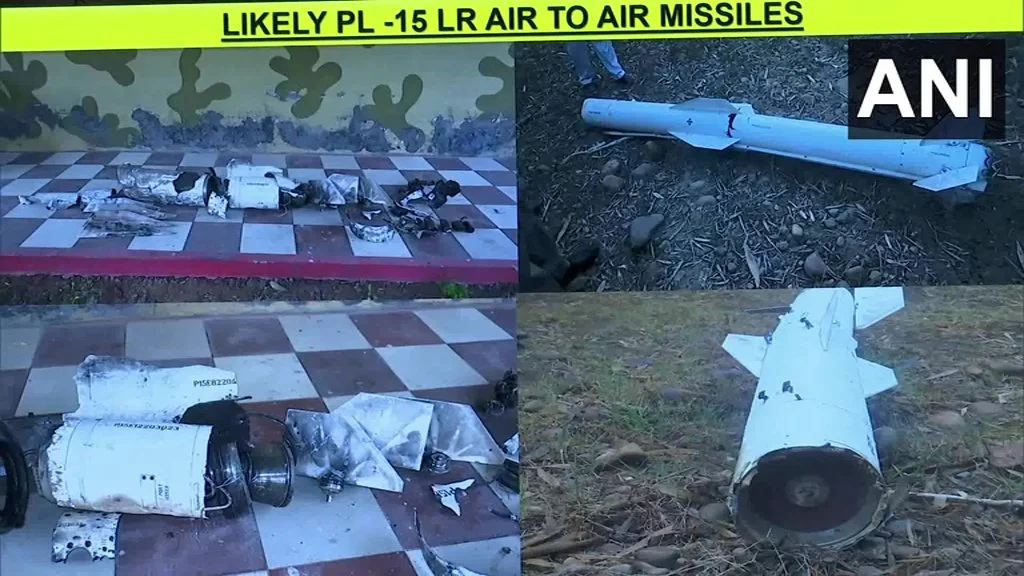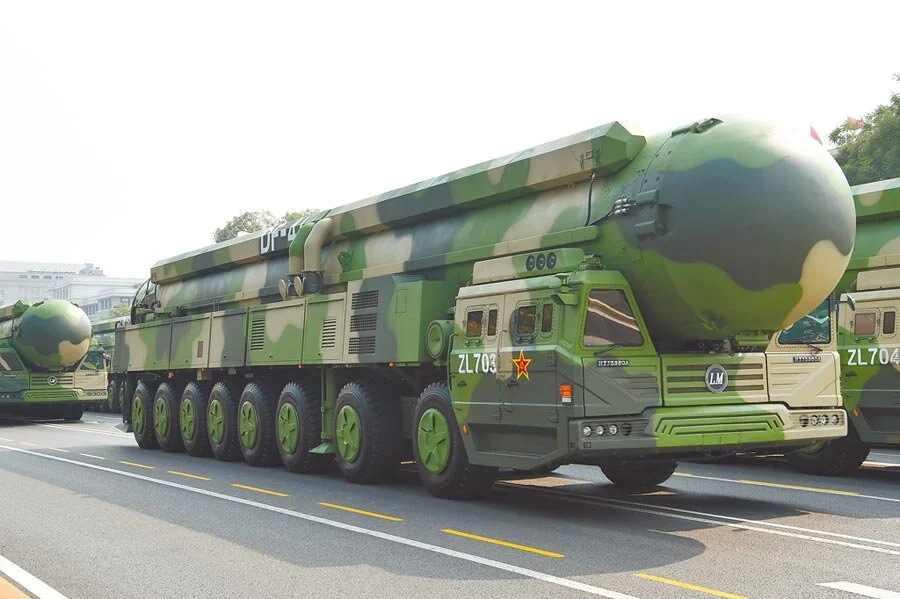Pakistan’s Defeat in the May 2025 Conflict: A Detailed Account of India’s Strategic Strikes and Diplomatic Fallout
By OSINT(Open-source intelligence) - UK
In May 2025, Pakistan suffered a swift and decisive defeat at the hands of India in a brief but intense military conflict. Triggered by a terror attack in Indian-administered Kashmir, India launched a series of precision strikes that dismantled Pakistan’s terrorist infrastructure, air defenses, and military bases. As Pakistan’s losses mounted and its counterattacks failed, its leadership turned to the United States and Saudi Arabia for diplomatic intervention to avert total collapse. This article elaborates on the key events of the conflict, detailing how Pakistan’s military was overwhelmed and ultimately forced to beg for a ceasefire.
1. May 7: India Destroys 9 Terror Camps in a Single Night
The conflict began on the night of May 7, 2025, when India launched a massive operation targeting nine terror camps in Pakistan and Pakistan-administered Kashmir. These camps, linked to groups like Jaish-e-Mohammed (JeM) and Lashkar-e-Taiba (LeT), were accused of orchestrating a deadly attack in Pahalgam on April 22 that killed 26 civilians, mostly tourists. Dubbed Operation Sindoor, the Indian offensive involved 80-90 aircraft, including Rafale jets armed with SCALP cruise missiles and AASM Hammer glide bombs, alongside BrahMos supersonic cruise missiles and SkyStriker loitering munitions. The strikes obliterated the camps, marking a strong statement against Pakistan’s alleged support for terrorism. Pakistan denied the accusations, but the destruction left its proxy networks in tatters. The funeral saw the Pakistani military and the government standing together with a US-designated terrorist. This confirmed significant losses.
The debris of a likely PL-15 air-to-air missile, which is of Chinese origin and was used by Pakistan during the attack on India.
2. May 8: India Knocks Out Chinese-Made Air Defenses and Radars in Lahore T
he next day, India escalated its campaign by targeting Pakistan’s air defense network in Lahore. Using precision strikes, Indian forces destroyed Chinese-supplied systems, including HQ-16 air defense batteries and radar installations critical to Pakistan’s ability to monitor and counter aerial threats. The loss of these assets exposed gaping vulnerabilities in Pakistan’s military infrastructure, particularly its reliance on foreign technology. Residents of Lahore reported widespread panic as explosions lit up the sky, with air raid sirens unable to mask the chaos. This move ensured that Pakistan’s skies were left defenseless, paving the way for further Indian operations.
3. May 9: India Flattens 11 Pakistani Airbases with BrahMos Missiles
On the night of May 9, India delivered a devastating blow by flattening 11 Pakistani airbases using BrahMos supersonic cruise missiles. Among the targets was the Nur Khan airbase near Rawalpindi, a key facility close to Pakistan’s military headquarters and vital for air refueling operations. Other bases, such as Rafiqui in Shorkot and additional strategic sites, were also hit with a combination of BrahMos, HAMMER, and SCALP missiles launched from Rafale jets. The scale of the operation dwarfed the initial strikes, crippling Pakistan’s air force and leaving its military leadership stunned. The precision and firepower of India’s assault underscored the technological and strategic disparity between the two nations.
4. May 9: Pakistan’s Counterattack Fails Against Indian Air Defenses
That same night, Pakistan attempted a counteroffensive, launching air and ballistic missile attacks aimed at Indian military installations. However, India’s advanced air defense systems, including the S-400 Triumf and the Integrated Counter UAS Grid, decimated the assault. Pakistani drones, missiles, and fighter jets targeting bases in Awantipura, Pathankot, and Bhuj were intercepted or shot down, with only minor damage reported. Pakistan’s claims of hitting significant Indian assets, such as S-400 or BrahMos systems, were dismissed by India as propaganda. The failure of this counterattack left Pakistan’s military humiliated and its options dwindling.
5. May 9: Pakistan Launches 6 Ballistic Missiles at Delhi, All Intercepted
Frustrated by its inability to retaliate effectively, Pakistani generals escalated the conflict by ordering the launch of six ballistic missiles toward Delhi, India’s capital. This desperate move aimed to shift the tide but was thwarted when India’s S-400 air defense system successfully intercepted all six missiles mid-flight. The interception prevented a potential catastrophe and showcased India’s robust defensive capabilities. For Pakistan, the failed strike was a tipping point, drawing international attention and raising fears of further escalation as its military strategy unraveled.
6. India Strikes Sargodha Airbase, Spooking Pakistan and the U.S.
In a bold and decisive strike, India next targeted the heavily guarded Sargodha airbase, a linchpin of Pakistan’s military operations. Sargodha houses the Combat Commanders School and serves as a hub for nuclear-capable aircraft, with underground facilities nearby believed to store part of Pakistan’s nuclear arsenal. The strike, executed with pinpoint accuracy, demolished key infrastructure and sent shockwaves through Pakistan’s leadership. The proximity to nuclear assets alarmed both Pakistani officials and the United States, raising the specter of a nuclear response. This move underscored India’s willingness to hit Pakistan’s most sensitive targets, pushing the conflict to a critical juncture.
The wreckage of the Turkish-origin YIHA and Songar drones that were shot down by India
7. Diplomatic Panic: Pakistan Appeals to Rubio, Vance, and Saudi Arabia
The destruction of Sargodha, combined with earlier losses, left Pakistan’s military on the brink of collapse. Fearing annihilation or a nuclear miscalculation, Pakistani General Asim Munir reached out to U.S. Secretary of State Marco Rubio, Vice President JD Vance, and Saudi Arabia’s Foreign Minister for urgent intervention. These leaders, in turn, contacted Indian Prime Minister Narendra Modi, Foreign Minister S. Jaishankar, and National Security Advisor Ajit Doval to broker a de-escalation. The diplomatic flurry reflected global concern over the conflict’s trajectory, with Pakistan’s pleas signaling its desperation to avoid further devastation.
8. May 10: Pakistan’s DGMO Requests Ceasefire, Seeks Face-Saving Exit
On May 10, Pakistan’s Director General of Military Operations (DGMO) contacted his Indian counterpart to formally request a ceasefire. After four days of relentless losses, Pakistan’s military was in disarray, its airbases destroyed, and its defenses shattered. The DGMO’s call came with a plea for a “face-saving off-ramp”—a way to end the conflict without admitting total defeat. With mediation from the U.S., Saudi Arabia, and 36 other nations, a ceasefire was agreed upon, taking effect at 5:00 p.m. IST on May 10. Though the fighting stopped, punitive measures like trade suspensions remained, leaving Pakistan battered and humbled.
Conclusion: Pakistan’s Collapse and the Cost of Escalation
Pakistan’s defeat in the May 2025 conflict with India was a stark demonstration of military asymmetry and strategic miscalculation. India’s destruction of terror camps, air defenses, and key bases—coupled with its ability to neutralize Pakistan’s counterattacks—left Pakistan with no choice but to seek foreign help to stave off collapse. The intervention of the U.S. and Saudi Arabia secured a fragile ceasefire, but Pakistan emerged from the conflict with its military crippled and its pride wounded. The episode serves as a cautionary tale of the perils of escalation in a region defined by tension and nuclear risk, with Pakistan’s losses a testament to India’s overwhelming response. Photo 1: The debris of a likely PL-15 air-to-air missile, which is of Chinese origin and was used by Pakistan during the attack on India. Photo 2: The wreckage of the Turkish-origin YIHA and Songar drones that were shot down by India.
5/13/2025
Evidence & sources:
1. Damien Symon @detresfa_ _, a globally recognized independent OSINT (Open-Source Intelligence) expert, used satellite imagery to dismantle propaganda from Pakistan and China. His findings revealed the destruction of vital Pakistani airbases, along with Chinese-made radars, air defense systems, and fighter jets stored in hangars, following India’s strikes.
Link: https://x.com/detresfa_
2. Modern War Institute (John Spencer)
John Spencer, Chair of Urban Warfare Studies at the Modern War Institute and a former US Army officer, analyzed the India-Pakistan conflict. In his writings, he explored how Operation Sindoor, India’s response to a terrorist attack, marked the establishment of a new military doctrine focused on decisive action against terrorism.
Link: https://spencerguard.substack.com/p/operation-sindoor-establishes-a-new
3. David Sanger (The New York Times)
David Sanger reported in The New York Times on Pakistan’s desperate appeal for US intervention after India’s airstrikes targeted the Nur Khan Air base. His article highlighted the diplomatic efforts to de-escalate tensions amid fears of a nuclear conflict, as the base’s proximity to Pakistan’s nuclear command raised alarm.
Link: https://www.nytimes.com/2025/05/10/us/politics/trump-india-pakistan-nuclear.html
4. Sky News (Yalda Hakim)
Yalda Hakim and her Sky News team investigated terror camps in Pakistan, uncovering evidence of their existence through social media posts linked to groups like Lashkar-e-Taiba. Their report exposed Pakistani officials’ evasive responses and lack of proof to counter claims of supporting terrorism, spotlighting the murky situation in Muridke.
Link: https://news.sky.com/story/terror-group-supporters-posted-on-tiktok-youtube-and-google-from-site-targeted-in-indian-airstrikes-13363716
5. Hannah Petersen (The Guardian)
Hannah Petersen of The Guardian interviewed two Pakistani sources who described their panic after India struck three airbases, including one near a nuclear facility. Their accounts underscored the heightened fear of nuclear escalation as the conflict intensified, prompting urgent ceasefire talks.
Link: https://www.theguardian.com/world/2025/may/12/how-india-and-pakistan-conflict-turned-from-brink-of-war-to-ceasefire-in-days
6. Maxar (US company ) High Resolution Satellite Imagery Evidence - NDTV News India
7. Maxar Technologies, a company that provides satellite imagery and data, has confirmed losses of Pakistani air assets guarded by Chinese radars and air defence.
https://www.ndtv.com/india-news/operation-sindoor-india-pakistan-tensions-craters-on-runways-clearest-satellite-pics-of-how-india-hit-pak-air-force-bases-8400608/amp/1
8. Tom Cooper - An Austrian military aviation historian also made an analysis on loss of Pakistan's air power in the battle.
https://xxtomcooperxx.substack.com/p/illusions-and-realities-of-cross-b6c
https://theaviationgeekclub.com/author/tom-cooper/amp/
9. Reuters Report
Even Reuters corroborated reports from NYT and the Guardian with its own sources. How Pakistan dialled the US post 3 bases got attacked.
https://www.reuters.com/world/asia-pacific/how-india-pakistan-pulled-back-brink-with-us-brokered-ceasefire-2025-05-13/Sources
Truth saves lives. Please support! 👇 真相能救命,敬請支持!👇
🌺Donate 捐款贊助: https://donorbox.org/support-inconvenient-truths-by-jennifer-zeng
🌺Membership 註冊會員:https://bit.ly/3biCEk5
🌺Bitcoin 捐款:bc1qlkkvwyvw96x3xx6jgzkhlnnv0nv3d9vm078vfd
🍀English X/Twitter 英文推特:https://twitter.com/jenniferzeng97
🍀Chinese X/Twitter 中文推特:https://twitter.com/jenniferzeng15
㊙️English Channel 英文頻道:https://gjw.us/jenniferz
㊙️Chinese Channel 中文頻道:https://www.ganjingworld.com/s/aWRQXgBgvv
👉Jennifer’s Bio 曾錚簡歷:https://www.jenniferzengblog.com/about/
㊙️Website 網站:https://www.jenniferzengblog.com/







